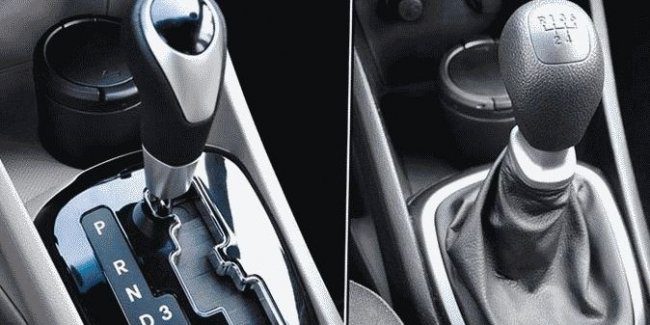
What to choose: variator or automatic
Content
An automatic transmission can be represented by a robotic gearbox, a classic automatic and a variator. When purchasing a car, a car enthusiast thinks about which gearbox to give preference to; which is better: a variator or an automatic transmission. When choosing between a variator and an automatic machine, you need to know how they differ, take into account their pros and cons, and also understand which of the devices is more reliable.
CVT transmission
Like any other gearbox, a variator is a device that converts torque from the engine to the wheels. Torque transmission is carried out steplessly within a certain control range. Quite often, the variator is designated by the abbreviation “CVT” (Continuously Variable Transmission), which translated from English means “transmission with continuously changing torque”.
CVT types
Depending on the device, the following main types of variators are distinguished:
- chain;
- V-belt;
- toroidal.
The most widely used V-belt CVT.
The V-belt CVT consists of a V-belt located between two sliding pulleys. During the movement of the car, the pulleys are compressed, then unclenched, providing a change in the gear ratio. The main purpose of the CVT is to provide a smooth, stepless torque change. This is true for cars, scooters, snowmobiles and other equipment.
In a CVT chain variator, power is transmitted by the chamfered ends of the chain links, and the pulling force is transmitted by the chain.
In toroidal variators, instead of pulleys, tapered disks are used, instead of a belt, rollers. They are capable of transmitting more torque. For the manufacture of parts for this type of CVT, high-strength steel is required, which ultimately affects its cost.
Advantages and disadvantages of CVT
The main advantage of a CVT transmission is the ability to provide a continuous change in torque. This allows for better fuel consumption and vehicle dynamics.
The disadvantages of the variator include:
- The inability to install it in cars with a powerful engine.
- Maximum loads, towing or systematic driving at high revs will lead to rapid wear of the variator belt, and, accordingly, to the breakdown of the CVT.
Automatic transmission
The automatic transmission is controlled by a shift selector located on the central tunnel or on the steering column (in American cars). Moving the selector to a certain position allows you to select the desired driving mode. Additionally, it is possible to select special modes of automatic transmission: winter, sports, economical. The difference in fuel consumption between normal, sport and economy modes is clear.
The classic automatic transmission consists of a planetary gearbox, a control system and a torque converter. The machine can be used in cars, trucks and buses.
The torque converter consists of a pump and turbine wheels with a reactor located between them. The pump wheel is connected to the engine crankshaft, the turbine wheel is connected to the gearbox shaft. The reactor, depending on the operating mode, rotates freely or is blocked by means of an overrunning clutch.
The transmission of torque from the engine to the gearbox occurs by the flow of liquid (oil) emitted by the impeller blades on the turbine blades. The gaps between the impeller and the turbine are minimal, and their blades have a specific shape that forms a continuous circle of oil circulation. Thus, there is no rigid connection between the engine and the transmission, which contributes to the smooth transmission of tractive effort.
The torque converter converts the rotational speed and the transmitted torque in a limited range, therefore a multistage planetary gearbox is attached to it. It also provides reverse movement.
Gear shifting takes place under oil pressure using friction clutches. The pressure between the clutches in accordance with the gearbox operation algorithm is distributed using a system of solenoid valves (solenoids) under the control of the control unit.
The disadvantages of an automatic transmission are its high cost, as well as increased fuel consumption.
Comparative characteristics of two types of gearboxes
Which device is better: a variator or an automatic machine? Let's make a comparative characteristic that allows you to identify the differences and determine which of the boxes is better and more reliable.
The difference between a variator and an automatic machine from an economic point of view
Which gearbox is better in terms of operating cost: CVT or automatic? Let's compare some indicators.
- Transmission fluid. CVT oil changes are more frequent and more expensive.
- Fuel consumption. Fuel in a car equipped with a variator is more economical.
- Repairs. Maintenance and repair of the variator is much more expensive than operating the machine. CVT is a rather complex and sensitive mechanism.
Although it is more expensive to maintain a CVT, the box itself is cheaper than a machine. And with the correct use of the box, it can serve for a long time and without repair.
Which device is better in terms of reliability
In order to determine the degree of reliability of devices, we set a number of difficult conditions:
- the possibility of towing;
- off-road;
- high speeds;
- sports riding.
The variator cannot cope with difficult conditions. His belt will not withstand the stress. A machine gun will do better here. Release CVT - smooth movement without sudden acceleration.
How to determine which device is installed in the car
- It is necessary to study the technical documentation of the machine. The designation of the variator is CVT, the automatic machine is AT.
- Take a test drive. If a variator is installed, then you will not feel the gear changes. The machine can be “listened to” and monitored by the tachometer. CVT works in one key, measured. However, it is possible that there is a special mode that simulates gear changes and allows the driver to feel them shifting.
To sum up
Today, automatic transmissions are much more common than CVTs. But the latter has great potential. Automatic transmission is safer to use in vehicles with high power and towable trailers. From the point of view of economy, the variator looks preferable.
CVT or automatic? The choice is yours. And it will depend on the characteristics of the devices that are your priority. Do you like smooth city driving in a small passenger car? Your choice is CVT. If you prefer sports driving or often use a trailer, then an automatic machine is better for you.
